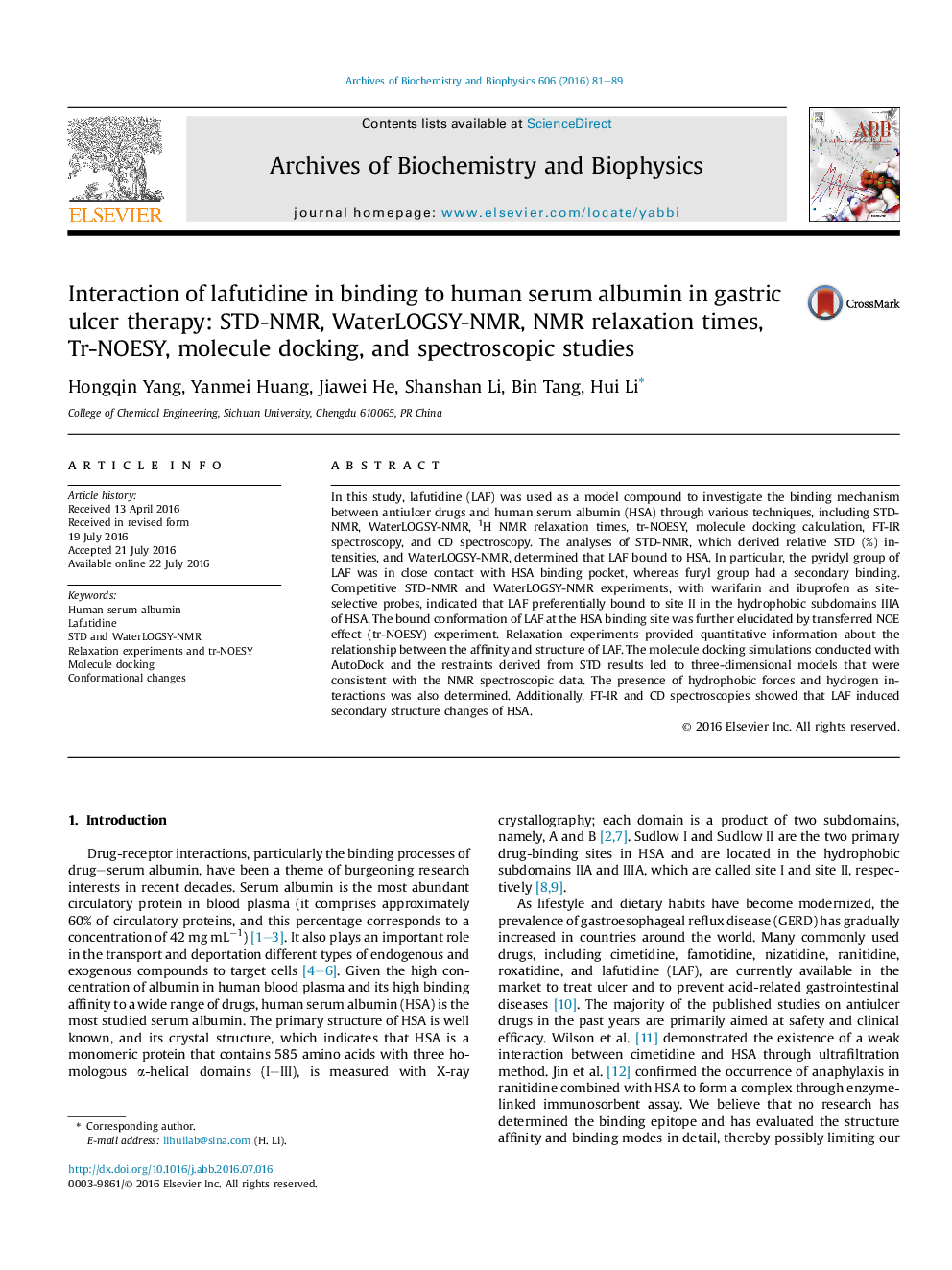| Article ID | Journal | Published Year | Pages | File Type |
|---|---|---|---|---|
| 1924701 | Archives of Biochemistry and Biophysics | 2016 | 9 Pages |
•STD and WaterLOGSY-NMR were used to determine the binding between LAF and HSA.•Competitive NMR experiments indicated that LAF preferentially bound to site II of HSA.•Relaxation experiment indicated that pyridyl group was spatially close to the aromatic residues of HSA.•The bioactive conformation of LAF was identified by tr-NOESY experiment.•žConformation changes of HSA induced by its interaction with LAF.
In this study, lafutidine (LAF) was used as a model compound to investigate the binding mechanism between antiulcer drugs and human serum albumin (HSA) through various techniques, including STD-NMR, WaterLOGSY-NMR, 1H NMR relaxation times, tr-NOESY, molecule docking calculation, FT-IR spectroscopy, and CD spectroscopy. The analyses of STD-NMR, which derived relative STD (%) intensities, and WaterLOGSY-NMR, determined that LAF bound to HSA. In particular, the pyridyl group of LAF was in close contact with HSA binding pocket, whereas furyl group had a secondary binding. Competitive STD-NMR and WaterLOGSY-NMR experiments, with warifarin and ibuprofen as site-selective probes, indicated that LAF preferentially bound to site II in the hydrophobic subdomains IIIA of HSA. The bound conformation of LAF at the HSA binding site was further elucidated by transferred NOE effect (tr-NOESY) experiment. Relaxation experiments provided quantitative information about the relationship between the affinity and structure of LAF. The molecule docking simulations conducted with AutoDock and the restraints derived from STD results led to three-dimensional models that were consistent with the NMR spectroscopic data. The presence of hydrophobic forces and hydrogen interactions was also determined. Additionally, FT-IR and CD spectroscopies showed that LAF induced secondary structure changes of HSA.
Graphical abstractThe interaction processes between an antiulcer drug and human serum albumin were examined using four complementary NMR techniques in combination with molecular docking, FT-IR and CD spectroscopies.Figure optionsDownload full-size imageDownload high-quality image (328 K)Download as PowerPoint slide
